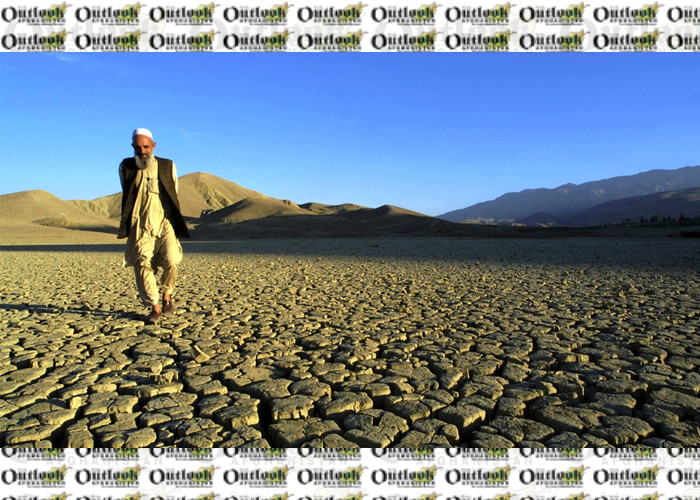At the height of poverty and insecurity, the alarm of drought was sounded in Afghanistan. Yesterday, the president of the country advised the second vice president, Amrullah Saleh, to supervise the management of upcoming drought in the country. The president said he had repeatedly reminded his colleagues for readiness against drought in last few years but they did not take it serious. These concerns are raised after national and international reports predicted less rainfall, this year, in the country. Based on recent technical reports announced by Afghan Meteorological Agency, 30 percent of rainfall reduction has predicted in first three months of 2021. Reportedly, the global meteorological models which developed for South Asian countries also confirm this prediction. However, these reports do not match to the objective reality that we have witnessed in the ground. The reports talk about 30 percent reduction rainfall while it seems more than 80% reduction because we have witnessed the least rainfall within few last months. These agencies had also predicted the coldest winter this year while it has not happened yet. Therefore, we need to more accurate prediction and plan about the probable drought crisis; otherwise, we may face unpredicted consequences which will be too late to address and manage the issue while the economic lives of 80% of people are dependent to rainfall and agricultural activities in the country.
Given to the bitter experiences in the past years, the traditional agriculture system of Afghanistan is extremely vulnerable against drought and its implications. Three years ago, the drought had impacted more than 20 provinces of the country. The groundwater levels hugely dropped, pastures were fully destroyed and millions of livestock were lost. It had largely damaged the farms and water sources which are heavily dependent on annual rainfall and snowfall. At that time, many water points and fountains had dried up across the country and the lack of rain and snow melt has made rivers run low or dried up completely. Faced with the lack of water, many farmers had chosen to minimize their losses by delaying planting crops and reducing field sizes. However, this was not a good strategy in general. Because there are two types of cultivation: irrigated (and irrigated which is known as rain-fed agriculture system mostly located in the mountains and hills and beinbg dependent to rain for irrigation . Therefore, if the rainfall decreased, rain-fed agriculture system will again be reduced to zero and the farmer will suffer the most.
As pointed out, the water sources and traditional system of agriculture in Afghanistan are heavily dependent on annual rainfall and snowfall and so lack of snowfall in the winter season will intensify the drought issue. On the other hand, almost all experts believe that Afghanistan has enormously impacted by global climate change and so the level of rainfall and snowfall has also reduced considerably. So, we will have uncertain climate or rainfall status in the next years and so need strategic plans and readiness against the uncertain conditions. Although the government showed readiness for the upcoming droughts, it might be beyond the fiscal ability of the government to deal with the issue as previous years. Three years ago when there was drought in 22 provinces of the country, up to 150,000 heads of livestock had perished in some provinces of the country. Many families had been forced to sell the items in their house to buy food. Thousands of people moved to urban centers. Therefore, it is more likely that the previous crisis may repeat in the upcoming summer.
Undoubtedly, Afghanistan is suffering from multiple issues such social insecurity, corruption, addiction and so on but none of which would be achieved without economic programs. It wants to emphasize that the upcoming drought will not only impact on economic condition of people but also on insecurity and education of children in the country. The children and women would be more at risk and vulnerable to miss school so that they could find small jobs to help purchase basic household items whilst few days ago the acting education minister said 3.7 million eligible students dropped out of school last year across the country while the weak and ignorant youths are already used as tool against people in the country.
In fact, the unemployment problem is largely responsible for driving the vicious cycle of war and conflicts in Afghanistan. The terrorist groups can easily hire unemployed teens to use as suicide attackers, battle forces, or laborers for implanting Improvised Explosive Devices (IED) and in some provinces unemployment has also led people to cultivate opium or poppy. Therefore, it is imperative upon the government of Afghanistan to renew its commitment for accelerating economic diversity in the country. However, the government has paid fundamental attention to water infrastructure rather than previous government but given the climate change issue and misuse from unemployed youths in the battlefield it is highly important to cross from traditional agriculture system in the country.
By and large, the upcoming year will be a hard year for Afghan people, especially for the farmers. The United Nations has already announced that the number of people in need of humanitarian assistance in Afghanistan is increasing .The organization's Office for Humanitarian Coordination has announced that 18 million Afghans will need humanitarian assistance in 2021, which is 5 million more than previous years. So, the people and international charities need to be prepared from now on as the decreased rainfall is predicted to lower groundwater, affect agriculture, poverty, drought, and rural migration to cities.

